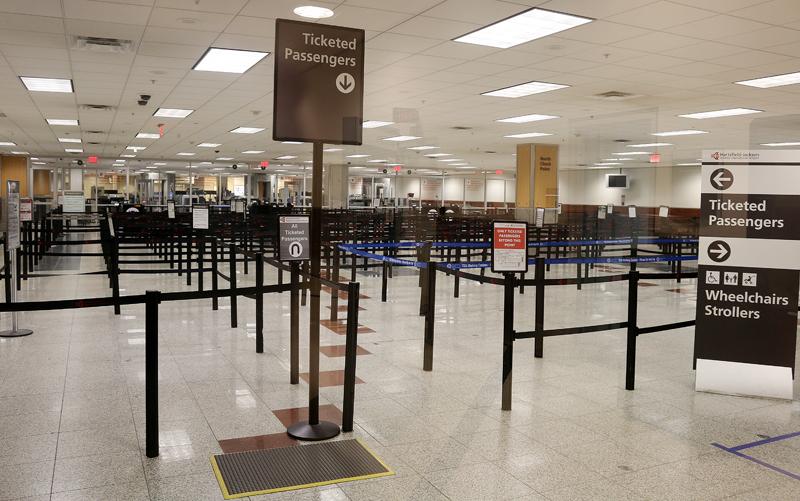Your comments are requested pertaining to changes proposed in a rule which are intended to:
- Provide the Department of Homeland Security with the flexibility to change its biometrics collection practices and policies to ensure that necessary adjustments can be implemented to meet emerging needs
- Enhance the use of biometric technology beyond background checks and document production to include identity verification and management in the immigration life cycle
- Enhance vetting to lessen the dependence on paper documents to prove identity and familial relationships
- Preclude imposters, and
- Improve the consistency in biometrics terminology within the Department of Homeland Security
Collection and Use of Biometrics by United States Citizenship and Immigration Services: Your Comments Requested by the Department of Homeland Security
…but your written comments must be submitted on the changes proposed to this rule on or before Tuesday, October 13, 2020. Comments on the Paperwork Reduction Act section of this rule — meaning, the information collection discussed therein — must be received on or before Tuesday, November 10, 2020.
Changes to this rule are being proposed to amend regulations concerning the use and collection of biometrics in the enforcement and administration of immigration laws by United States Citizenship and Immigration Services, United States Customs and Border Protection, and United States Immigration and Customs Enforcement, as the Department of Homeland Security further proposes:
- That any applicant, petitioner, sponsor, beneficiary, or individual filing or associated with an immigration benefit or request — including citizens of the United States — must appear for biometrics collection without regard to age, unless the Department of Homeland Security waives or exempts the biometrics requirement.
- To authorize biometric collection — without regard to age — upon arrest of an alien for purposes of processing, care, custody, and initiation of removal proceedings.
- To define the term biometrics to mean “the measurable biological (anatomical and physiological) or behavioral characteristics used for identification of an individual.”
- That this rule increases the biometric modalities that the Department of Homeland Security collects — to include iris image, palm print, and voice print — to determine genetic relationships to its pre-existing biometric practices, which include collecting the fingerprints and signatures of immigrants.
- That this rule may require, request, or accept deoxyribonucleic acid — or DNA — test results, which include a partial DNA profile, to prove the existence of a claimed genetic relationship and that the Department of Homeland Security may use and store DNA test results for the relevant adjudications or to perform any other functions necessary for administering and enforcing immigration and naturalization laws.
- That this rule would modify how nonimmigrant petitioners of Violence Against Women Act and victims of human trafficking — or VAWA and T respectively — demonstrate good moral character; as well as remove the presumption of good moral character for those younger than the age of 14.
- To further clarify the purposes for which biometrics are collected from individuals filing immigration applications or petitions, to include criminal history and national security background checks; identity enrollment, verification, and management; secure document production, and to administer and enforce immigration and naturalization laws.
What is Biometrics — and Is It Secure?
Biometrics is a technology which calculates and measures characteristics of the human body for identification and authentication purposes in order to control access. Fingerprints and eye scans are only two examples of ways to identify eligible people in order to grant them access to sensitive information or secure locations. Because no two people have exactly the same characteristics — such as fingerprints, which are unique to each person — biometrics is considered one of the more secure technologies…
…but whether or not the increased use of biometric technology is a positive trend depends on who is asked that question.
“Identity theft, fraud and terrorism are real problems”, according to this article from Scientific American, which claims that biometrics security poses huge privacy risks. “Used properly, biometrics could help protect against them. But the potential for misuse is glaringly obvious. We must begin setting rules to govern the use of these technologies now.”
From licenses for drivers issued by state governments to portable electronic devices, the use of biometric technology has significantly increased in recent years — and travel in general is no exception, as in an effort to continue to improve the customer experience, an announcement from Delta Air Lines officially proclaimed that members of Delta Sky Club who are also members of CLEAR can use their fingerprints to enter all 50 Delta Sky Club locations in the United States beginning in March of 2018. At that time, Delta Air Lines was the only global airline based in the United States to offer customers a secure biometric check-in option at a single touch point across its domestic network; and using biometric technology to gain access to a Delta Sky Club is offered at no extra cost — and members are not required to use it, as it is an option.
CLEAR is purportedly the leading biometric identity platform in the United States which uses fingerprint and iris identification technology at airports and sports stadiums across the United States.
The Greater Orlando Aviation Authority — under which Orlando International Airport operates — became the first aviation authority in the United States to commit to processing all arriving and departing international travelers with a form of biometric technology known as facial recognition technology back in June of 2018.
Summary
I wanted to read and gauge the 318 formal public comments which have already been collected at the time this article was written — but the site which hosts the comments was stuck in a cycle of perpetual loading of content, leaving me nothing more with a blank white screen.
“Those who would give up essential Liberty, to purchase a little temporary Safety, deserve neither Liberty nor Safety” is a quote often attributed to Benjamin Franklin.
Based on that statement, I originally wrote in this article on Tuesday, March 27, 2018 that I am personally not convinced that biometrics is the way to go, as I do not support the idea of voluntarily giving up what little privacy I may have left in this world in order to purportedly keep sensitive information about me more secure. I am also skeptical that biometrics will work 100 percent of the time as intended. What will happen when things go wrong — such as a technological glitch which could prevent the biometrics from working properly and denying you access to what you either want or need?
As airports will be required to pay for and implement these biometric systems, you can bet that the cost will eventually be passed on to you and other travelers.
The Department of Homeland Security has included full legal citations of authorities, explanations, and more details regarding the proposed changes in the section of the main preamble that discusses the background, need, and authority for the change…
…but could the proposed changes in the rule eventually affect travelers as well as immigrants — and could they also be considered an invasion of privacy?
Even worse: could the government abuse the privilege of collecting such personal and private information if it is used for purposes beyond the scope of which they were intended?
I get the argument that much of our privacy is already compromised these days — but I am curious as to your opinion, which I hope you will post in the Comments section below. Would you embrace biometric technology at the expense of risking the privacy of yourself and your sensitive information — especially if the collection of that information by a government agency was enhanced?
Photograph ©2016 by Brian Cohen.

